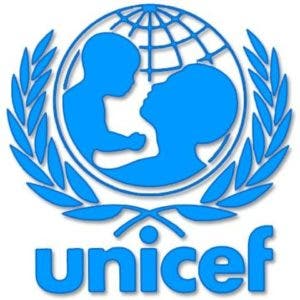The United Nations Children Fund (UNICEF) yesterday warned state governments in the the North West to implement better focused and effective strategies to address the underlying and contributing root causes of poor human development indicators in their states.
Chief of UNICEF Kano Office, Mr. Rahama Mohammed Farah, raised the concerns at the Katsina launch of the Multiple Indicator Cluster Survey Round 6 (MICS6) Report.
“The launching of the MICS in Katsina is an urgent call for the state and non- state actors and policy makers to design innovative strategies and the state government to allocate and release adequate resources to improve the current human development situation in Katsina if there is enough commitment to improving the wellbeing of children and women who suffer the most,” Farah said.
He added: “There is a continuous need across the states in the northwest of Nigeria for effective interventions to reduce poverty and improve the basic social services in health, education, nutrition, social protection, water and sanitation and child’s rights.”
The UNICEF chief, who lamented the MICS data showed that the learning achievement situation in Katsina state is still far below the national average, lamented that in Katsina only 9% of the children assessed, had demonstrated foundational reading skills compared to 26% at the national level.
He further said: “Adequate good nutrition Nutrition is also critical to the survival and development of children. In terms of ensuring minimum dietary diversity in children’s feeding Katsina state has significantly declined from where it was 10 ago.
“The nutritional situation of children aged 6-59 months has worsened with the continuing increase of daily Severe Acute Malnutrition (SAM) cases admission which reach in average about 2,000 cases admission in a month.
“Based on the preliminary findings from a recently completed SMART survey across the 34 LGAs of Katsina State an estimated 245,300 children aged under 5 are suffering from SAM; and need immediate treatment.”
He said the MICS data shows that the learning achievement situation in Katsina state is still far below the national average with only 9% of the children assessed, demonstrated foundational reading skills compared to 26% at the national level.
This MICS round 6 survey conducted in 2021 and its results released in August this year, Mr. Farah noted, was carried out at the household level to provide statistically reliable data on key development indicators concerning children, women and vulnerable groups in the society.
Hear him: “The MICS results 2021 for Katsina state indicate that while the state has made reasonable progress in some indicators, there are still areas that require intensive and focused efforts and resources to be further improved in Katsina state.
“One of the most critical indicators in the health sector is the under-five mortality. The 2021 MICS showed that Between 2011-2021 and in 10 years, Katsina state has reduced its under-five mortality by 29%, however, despite this progress, this rate continues to be higher than the national average.
“In terms of immunization, MICS 6 indicates that Katsina state has made a significant improvement in Penta 3 coverage of 41%. However, this coverage is still very low and currently, most children in Katsina are not fully immunized.”
Speaking on ANC services that very critical for mothers and children health, he observed that that the services had deteriorated in the state with only 40.2% of ANC visits are attended by skilled health personnel.
“There is need for a significant improvement in primary health care services in terms of access and quality in Katsina state particularly at the ward level if the state aims to improve the status of health indicators.
“Adequate good nutrition Nutrition is also critical to the survival and development of children. In terms of ensuring minimum dietary diversity in children’s feeding Katsina state has significantly declined from where it was 10 ago.
“The nutritional situation of children aged 6-59 months has worsened with the continuing increase of daily Severe Acute Malnutrition (SAM) cases admission which reach in average about 2,000 cases admission in a month.
“Based on the preliminary findings from a recently completed SMART survey across the 34 LGAs of Katsina State an estimated 245,300 children aged under 5 are suffering from SAM; and need immediate treatment.”






















